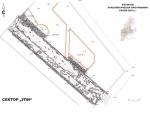Summary (English)
AGATHOPOLIS (Boni Petrunova – boni_boon@abv.bg, Elena Vasileva, Andrei Aladzhov) The Late Antique and Mediaeval fortress is situated on a peninsula, covering an area of 0.5 – 0.6 ha. Agathopolis was mentioned in connection with the military victories of the proto-Bulgarian Khan Krum (AD 803 – 814) achieved in AD 812 and it remained within the borders of the First Bulgarian Kingdom until AD 971. In 1307, during the reign of the Bulgarian King Theodore Svetoslav (1300 – 1321), Agathopolis was a Bulgarian frontier fortress. In 1332 it was conquered by the Byzantine Empire, but the Bulgarian King Ivan Alexander (1331 – 1371) reconquered it. Subsequently, Agathopolis again became part of the Byzantine Empire. The fortress was mentioned as Gastopoli in portolans and maps of Genoa. In the period 1413 – 1453 the town maintained trade relations with Constantinople and Venice. In 1453 Agathopolis was conquered by the Ottomans. In the eparchial lists, the town is recorded as an episcopalian center from the 9th to the middle of the 17th centuries. The excavations of 2006 were resumed in Sector UPI. The fortification wall was built in the 5th century AD and was later reconstructed at least twice. It was constructed in ¬¬opus impleсtum and with ashlar facing. Its foundations were constructed of cut stones bonded with mud. During the 9th – 11th century, the fortification wall was widened from the outside up to 3.20 m in width. A stratum 30 cm thick, containing material from the 1st – 3rd centuries AD, was documented under the foundations of the wall. The finds comprised a coin from the Roman period and sherds from Thracian pottery of the 1st millennium BC, Hellenistic black-gloss pottery, Megarian bowls, Roman red-gloss pottery, Late Antique pottery, Byzantine pottery of the 10th – 14th centuries and Ottoman pottery of the 15th – 19th centuries. Remains from the Late Antique and Mediaeval fortification wall were documented in Sector Harbor. A sector 10 m long was explored, dated to the 10th – 11th century, judging by the coins. The finds from the excavations included two nummi of the second half of the 4th century AD, three coins of the 11th – 12th centuries and two coins of the 14th century, one of them minted by the Bulgarian King Ivan Alexander.
- Boni Petrunova - National Museum of History
- Elena Vasileva - Archaeological Institute with Museum
- Andrei Aladzhov - Archaeological Institute with Museum
Director
Team
Research Body
- Archaeological Institute with Museum






![Download [PDF]](/excavation/skins/fasti/images/results/download_sml.png)
